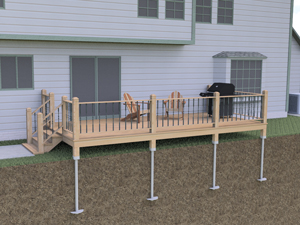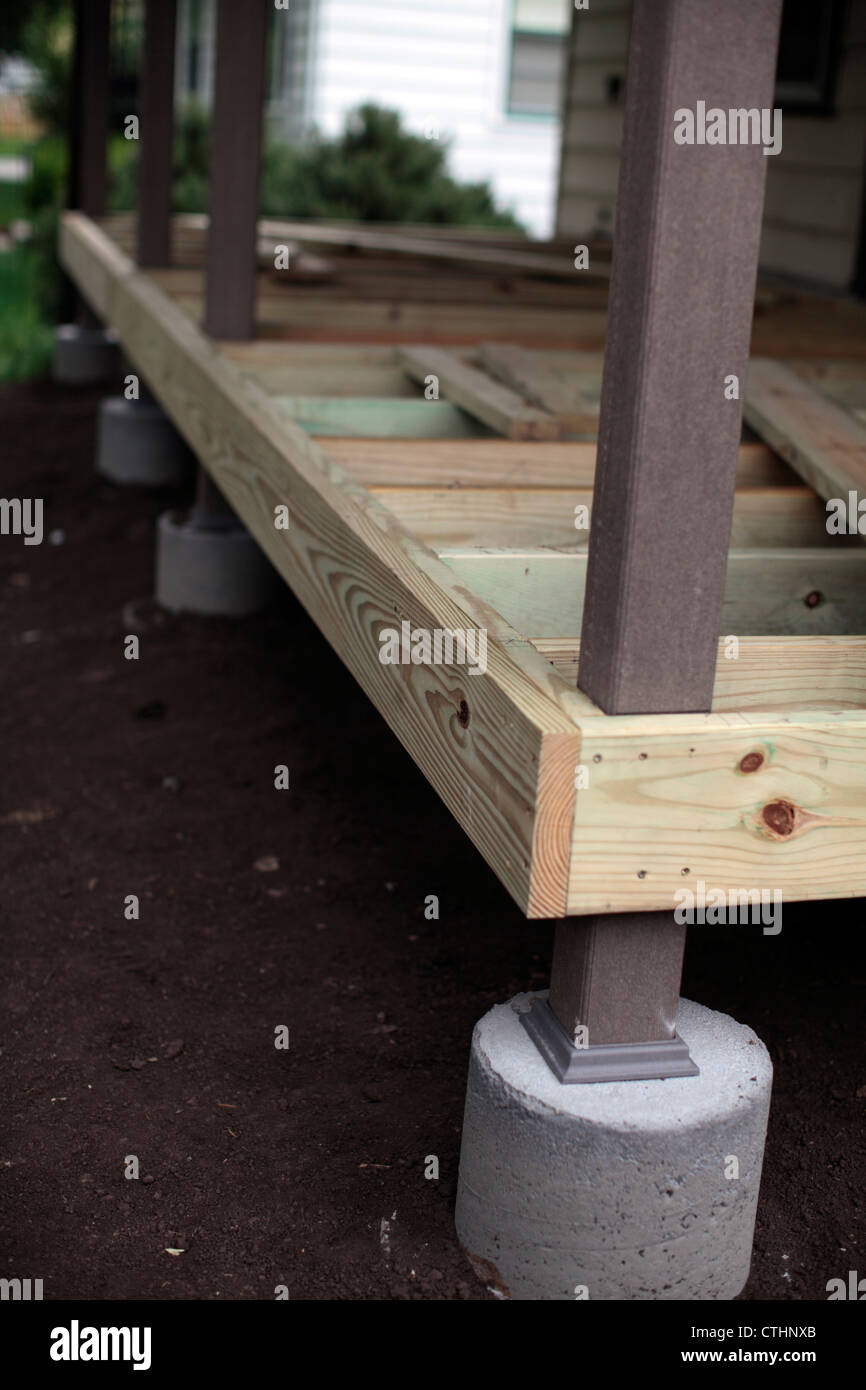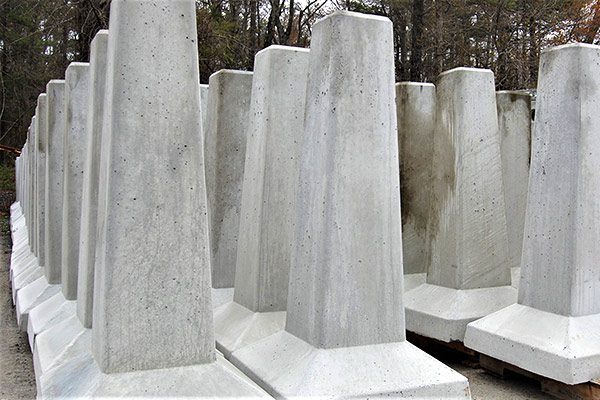Deck Footings 101: Browsing the Essentials for a Stable and Long Lasting Deck
Specialist Tips for Setting Up Deck Footings to Support Your Outdoor Area
When it comes to developing a deck, one of the most important components to think about is the setup of appropriate grounds. These footings are the structure upon which your outside area will certainly relax, supplying security and assistance for years to come. What specifically does it take to mount deck footings correctly?
Importance of Correct Deck Footings
Correct deck grounds are vital for guaranteeing the security and long life of your outdoor area. Without solid and appropriately set up footings, your deck might become unsteady, leading to safety and security hazards and expensive repairs.

In enhancement to stability, proper deck footings additionally add to the durability of your outdoor space (Deck Footings). Footings that are designed and created to stand up to the aspects and dirt problems in your location will certainly aid stop the deck from clearing up or shifting with time. By making sure the footings are correctly sized and installed, you can lessen the risk of damages to the deck structure, extending its life-span and decreasing the demand for expensive repair work or replacements

Picking the Right Kind Of Footings
When choosing the proper kind of footings for your deck, it is very important to consider factors such as soil problems, neighborhood building ordinance, and the overall design of your outdoor room. The kind of footing you pick will play a vital role in making certain the stability and long life of your deck.
One typical kind of ground is the concrete footing. Concrete grounds are suitable for many soil conditions and give outstanding assistance for decks. They are typically installed below the frost line to stop shifting and settling due to freezing and thawing cycles. Another choice is helical piers, which are ideal for locations with unsteady dirt or high water tables. These piers are screwed into the ground and give strong support for the deck.
In many cases, you may need to utilize customized grounds, such as heap grounds or deep structures, if you are developing a multi-level or large deck. These grounds are designed to disperse the weight of the deck over a bigger location, ensuring stability and preventing sinking or working out.
Before picking a kind of footing, it is important to speak with regional building regulations and regulations to ensure conformity. Furthermore, take into consideration the layout and meant use your exterior area. Elements such as the size, form, and load-bearing requirements of your deck will certainly influence the kind of footing that is most ideal.
Preparing the Ground for Footing Setup
To appropriately prepare the ground for footing installation, it is essential to analyze the dirt conditions and take essential actions to ensure security and longevity of the deck. The very first step is to dig deep into the area where the grounds will certainly be set up. The deepness of the excavation will rely on the frost line in your region and the specific needs of the deck style. It is important to eliminate any vegetation, rocks, or particles from the excavation to guarantee a strong foundation.
Once the location has actually been dug deep into, the next action is to compact the dirt. This can be done utilizing a plate compactor or by utilizing a hand tamper. Condensing the dirt helps to remove any type of gaps or air pockets, which can lead to clearing up and instability with time.
After compacting the dirt, it is essential to lay a layer of gravel or crushed stone at the base of the excavation. This will certainly offer water drainage and help to avoid water from merging around the grounds, which can lead to erosion and instability.
Step-by-Step Guide to Setting Up Deck Footings
After correctly preparing the ground for footing setup, the next step is to begin see post the process of installing deck footings. This step-by-step guide will offer you with a clear understanding of how to set up see this deck footings for your exterior area.
Figure out the location: Begin by noting the settings of the deck footings utilizing stakes and string. Make sure that the places line up with the style and design of your deck.
Dig the openings: Use a message hole digger or an auger to dig the holes for the footings. The depth and diameter of the openings need to remain in accordance with regional building codes and the particular requirements of your deck design.
Degree the openings: Make use of a degree to guarantee that the holes are dug to the appropriate deepness and are level with each other. (Deck Footings)
Include crushed rock: Area a layer of gravel at the bottom of each opening to enhance drain and avoid the timber from rotting.
Put the grounds: Place the grounds into the holes, making certain they are degree and plumb. Utilize a degree and a gauging tape to make sure accuracy.
Safeguard the grounds: Pour concrete into the holes around the footings, loading them to the top. Utilize a message degree to ensure the footings continue to be level as the concrete sets.
Allow time for curing: Allow the concrete cure according to the manufacturer's get redirected here guidelines prior to waging the deck building.
Common Blunders to Prevent Throughout Footing Setup
One essential facet to think about during the setup of deck footings is avoiding usual mistakes that can endanger the stability and durability of your outdoor room. While deck footings might feel like a straightforward and straightforward part of the building and construction process, overlooking particular factors can cause costly repair work and potential security hazards down the line.

In addition, overlooking to mount appropriate drainage actions can trigger water to gather around the footings, causing rot, decay, and the ultimate weakening of the deck's foundation. Using the incorrect kind of footing material or stopping working to adequately protect the grounds can compromise their structural stability.
To avoid these blunders, it is important to speak with a specialist or follow industry standards to ensure proper footing setup. By doing so, you can make certain the security and longevity of your outdoor room, giving a secure and satisfying atmosphere for many years ahead.
Verdict
To conclude, setting up correct deck grounds is crucial for the stability and longevity of your outdoor room. By picking the appropriate kind of footings and adequately preparing the ground, you can ensure a solid foundation for your deck. Following a step-by-step overview and avoiding typical errors during footing installation will certainly even more improve the longevity and safety and security of your deck.
Correct deck grounds are necessary for ensuring the stability and durability of your exterior space. The footings serve as a connection between the ground and the deck, permitting the weight of the deck and its owners to be dispersed evenly right into the dirt.One typical type of ground is the concrete footing. Insert the grounds: Put the footings right into the openings, making sure they are level and plumb. Safeguard the grounds: Pour concrete right into the openings around the footings, filling them to the top.